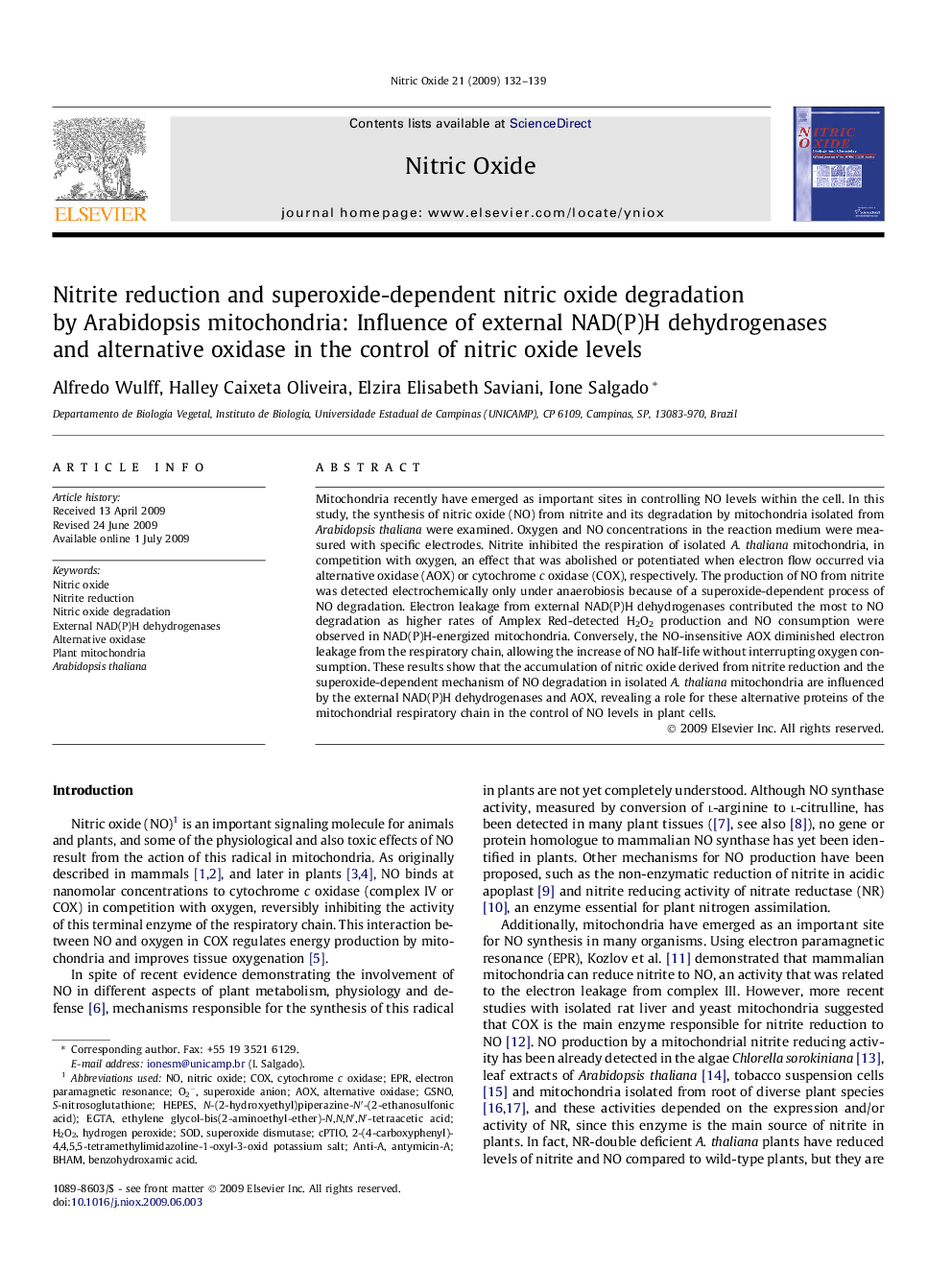| Article ID | Journal | Published Year | Pages | File Type |
|---|---|---|---|---|
| 10835186 | Nitric Oxide | 2009 | 8 Pages |
Abstract
Mitochondria recently have emerged as important sites in controlling NO levels within the cell. In this study, the synthesis of nitric oxide (NO) from nitrite and its degradation by mitochondria isolated from Arabidopsis thaliana were examined. Oxygen and NO concentrations in the reaction medium were measured with specific electrodes. Nitrite inhibited the respiration of isolated A. thaliana mitochondria, in competition with oxygen, an effect that was abolished or potentiated when electron flow occurred via alternative oxidase (AOX) or cytochrome c oxidase (COX), respectively. The production of NO from nitrite was detected electrochemically only under anaerobiosis because of a superoxide-dependent process of NO degradation. Electron leakage from external NAD(P)H dehydrogenases contributed the most to NO degradation as higher rates of Amplex Red-detected H2O2 production and NO consumption were observed in NAD(P)H-energized mitochondria. Conversely, the NO-insensitive AOX diminished electron leakage from the respiratory chain, allowing the increase of NO half-life without interrupting oxygen consumption. These results show that the accumulation of nitric oxide derived from nitrite reduction and the superoxide-dependent mechanism of NO degradation in isolated A. thaliana mitochondria are influenced by the external NAD(P)H dehydrogenases and AOX, revealing a role for these alternative proteins of the mitochondrial respiratory chain in the control of NO levels in plant cells.
Related Topics
Life Sciences
Biochemistry, Genetics and Molecular Biology
Biochemistry
Authors
Alfredo Wulff, Halley Caixeta Oliveira, Elzira Elisabeth Saviani, Ione Salgado,
